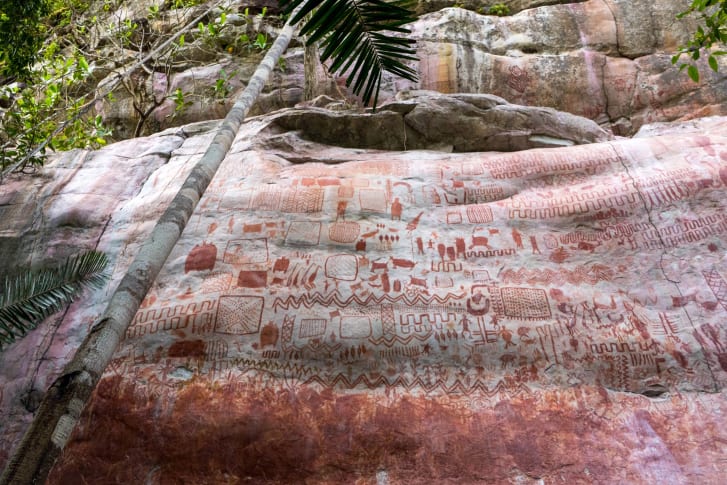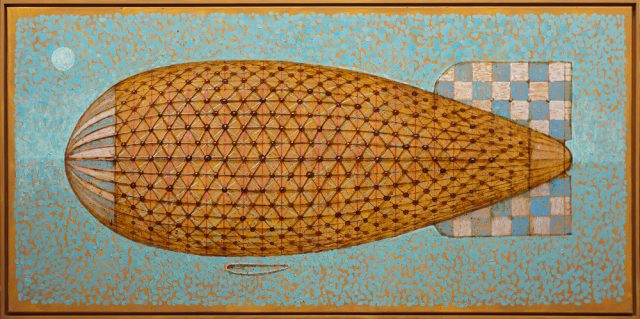The great discovery: rock paintings found in Colombia
In the Amazon rainforest, scientists have discovered thousands of rock drawings of great Ice Age animals such as mastodons. According to a press release from researchers at the University of Exeter in the UK, these images were likely taken 11,800-12,600 years ago.

Photo Marie-Claire Thomas / Wild Blue Media.
Located in Serranía La Lindos in what is now Colombia, rock art shows how the area’s earliest inhabitants coexisted with the rich fauna of the Ice Age. These rock drawings are arranged on three different rock massifs, the largest of which, known as Cerro Azul, contains 12 larger paintings and thousands of individual pictograms. In the rock drawings you can see what looks like giant sloths, mastodons or camelids. Other shows feature animals such as bats, alligators, monkeys and turtles. At the time these works were written, the Amazon was transformed from a mosaic of savannahs, rainforests, and thorn thickets to the broad deciduous rainforest we know today.
“These are truly amazing images, created by the earliest inhabitants of the western Amazon,” said Mark Robinson, archaeologist at the University of Exeter. As he explained further, these images give us an extraordinary insight into the life of the then community, surrounded by giant animals.
The paintings, made with the use of red pigments, constitute one of the largest and oldest collections of rock art discovered in South America. Experts believe the authors of these paintings probably used fire to exfoliate the rocks and prepare the flat surfaces for painting. The drawings are well preserved as they are protected by overhanging rock. As a result, they are in better condition than other works of this kind found in the Amazon. Some of them were painted very high.
The rock images from Colombia were probably created by hunter-gatherers who mostly fed on fruit, as well as fished for piranhas and alligators in a nearby river. The bones and plant debris also indicate that they ate snakes, frogs, armadillos, and rodents. Project researchers are working to find out when exactly these people settled in the Amazon and how their presence affected the region’s biodiversity.
Exeter professor of archeology José Iriarte told CNN that the discoveries are the initial stage of the project, which will run for five years.
One of the most important and fundamental goals is to document all rock art in the area and establish what other animals are depicted on them: “It is likely that art was a powerful part of culture and a way to build social bonds. And the visible level of nature observation is amazing. “





